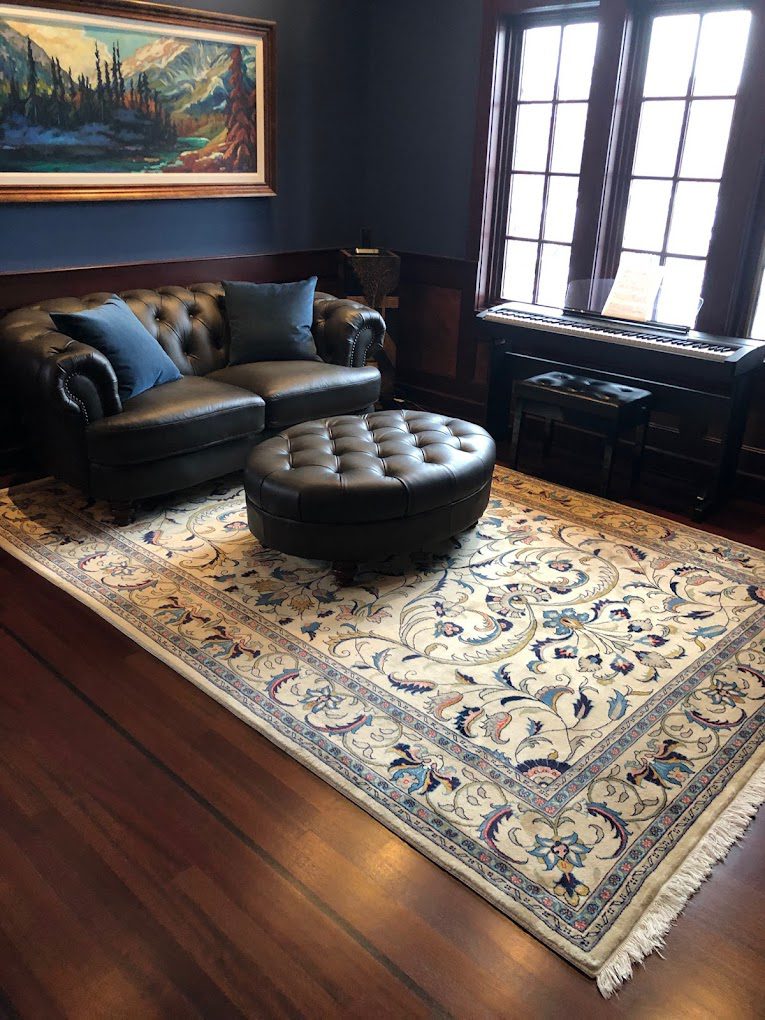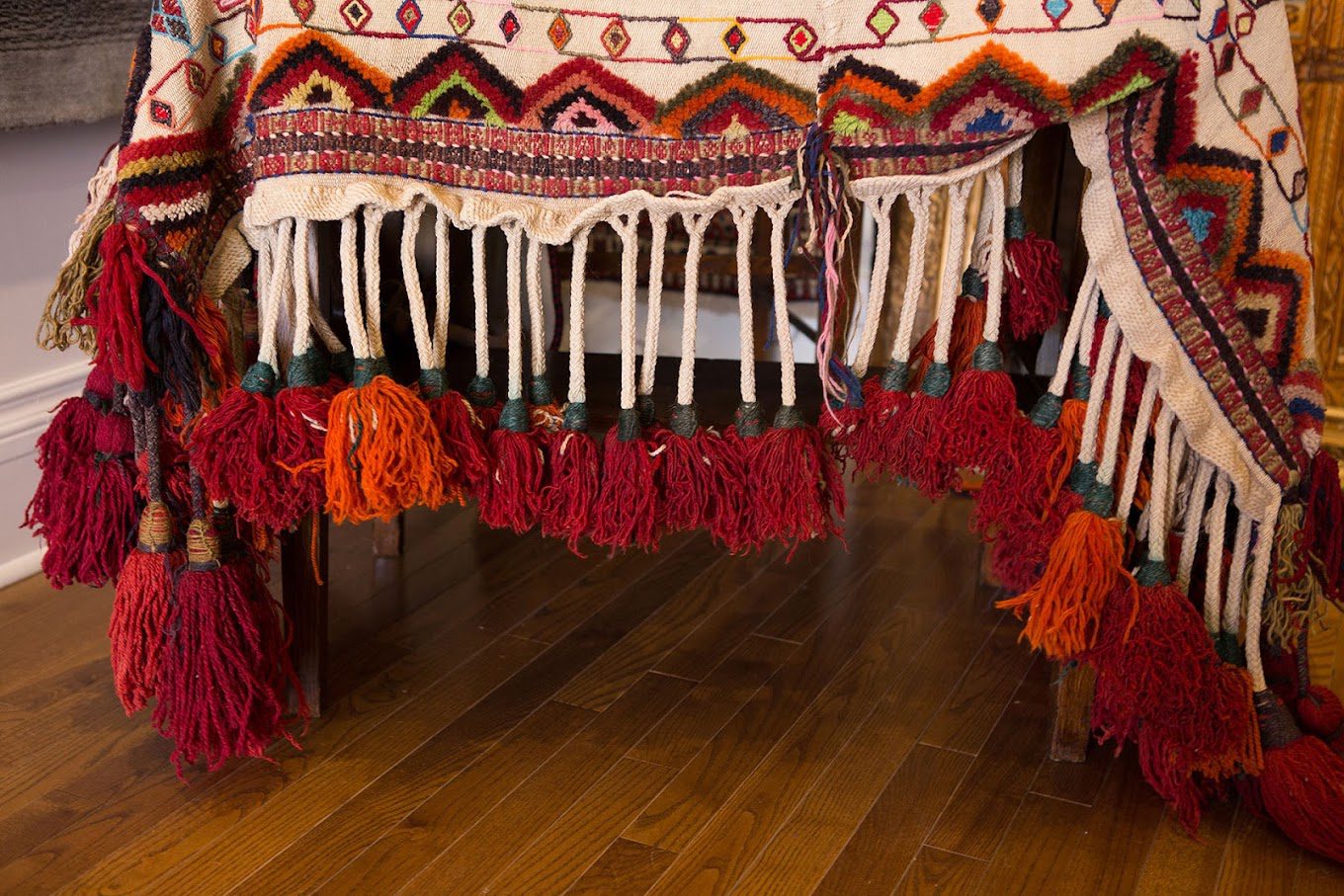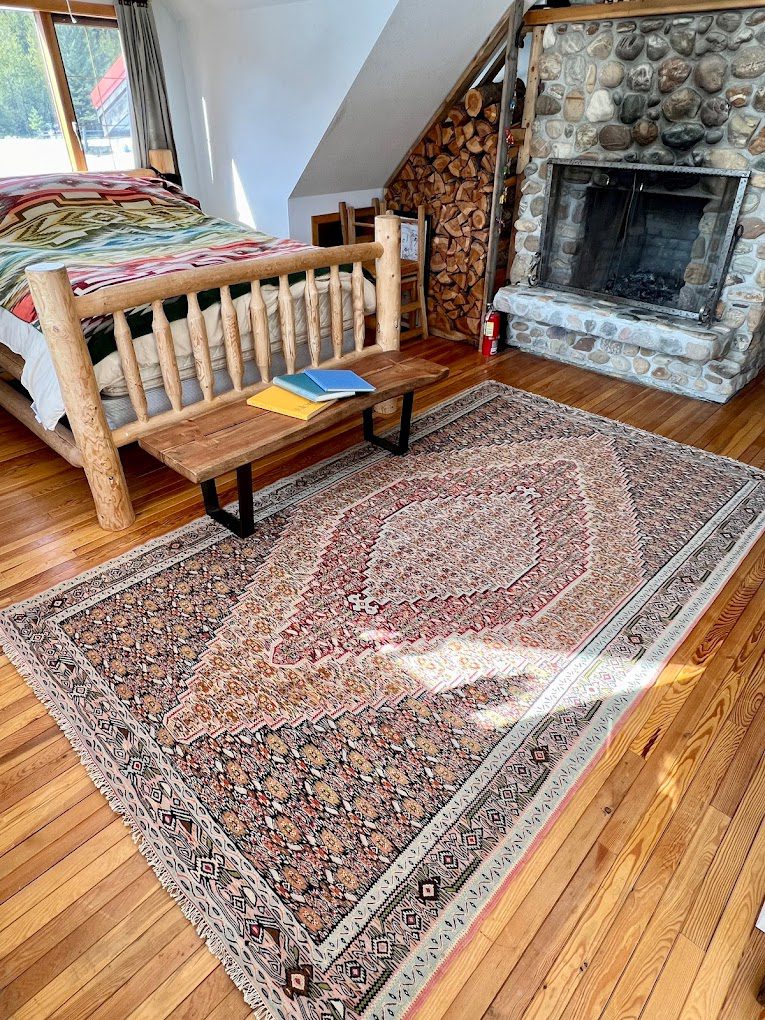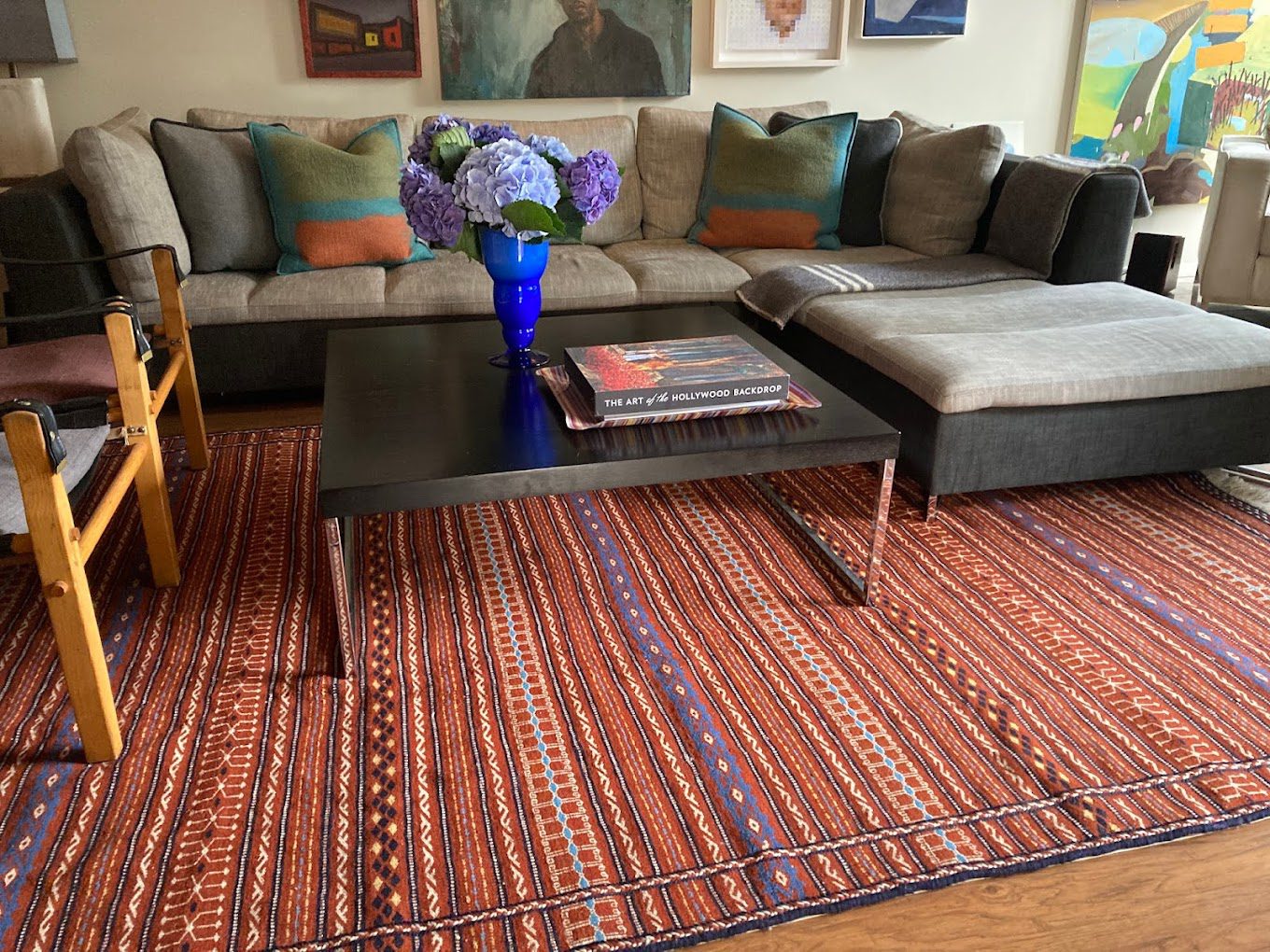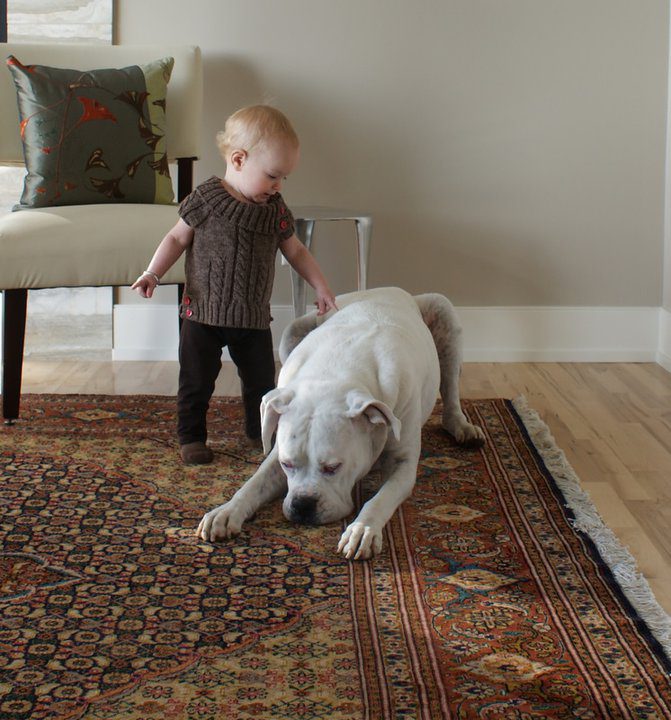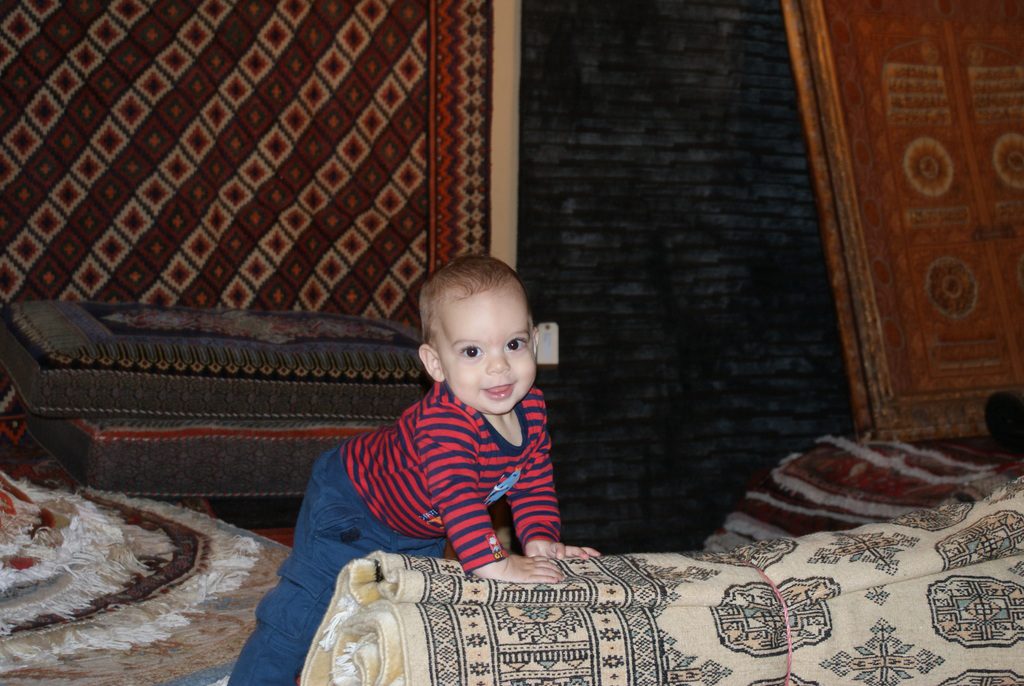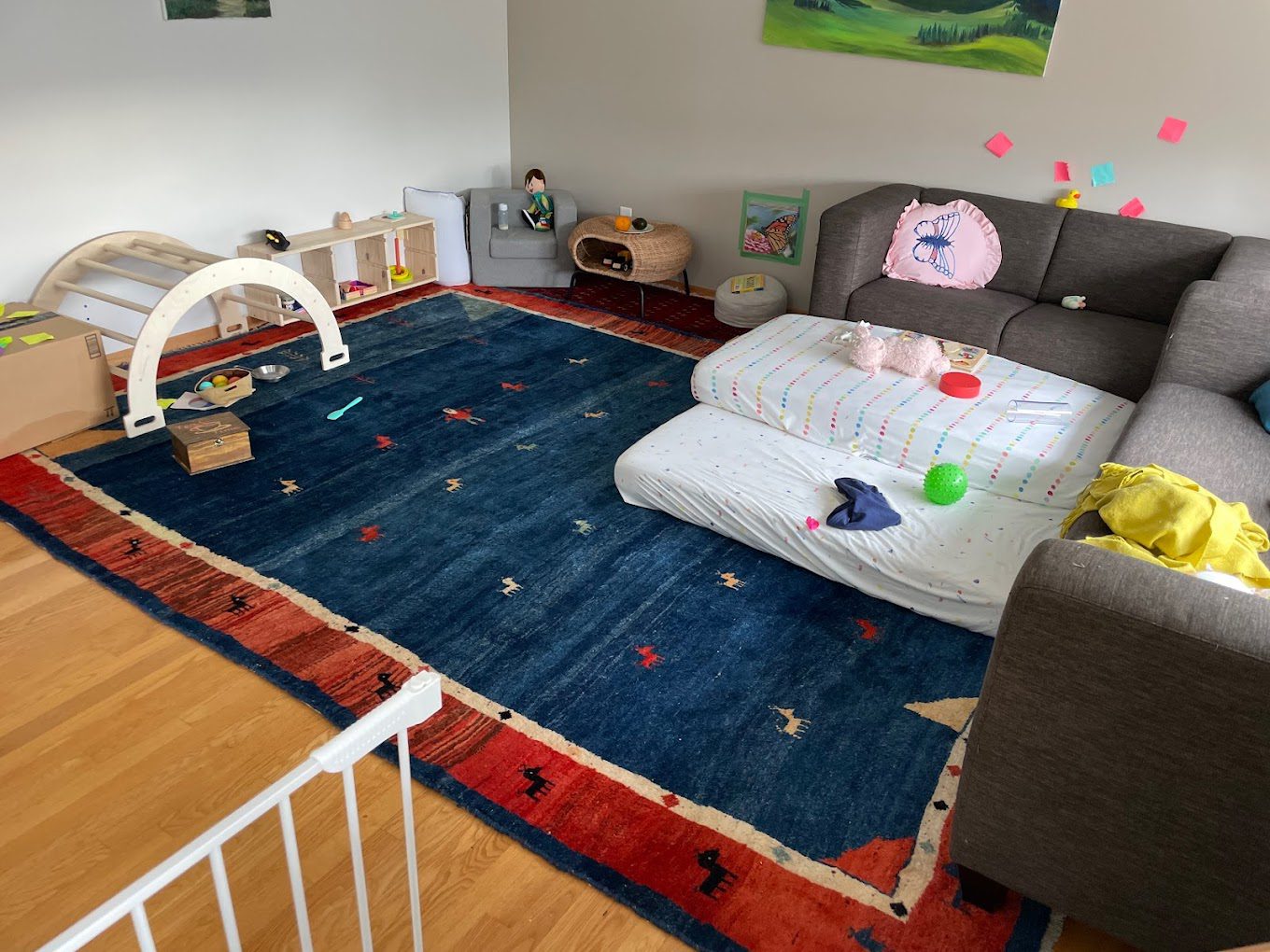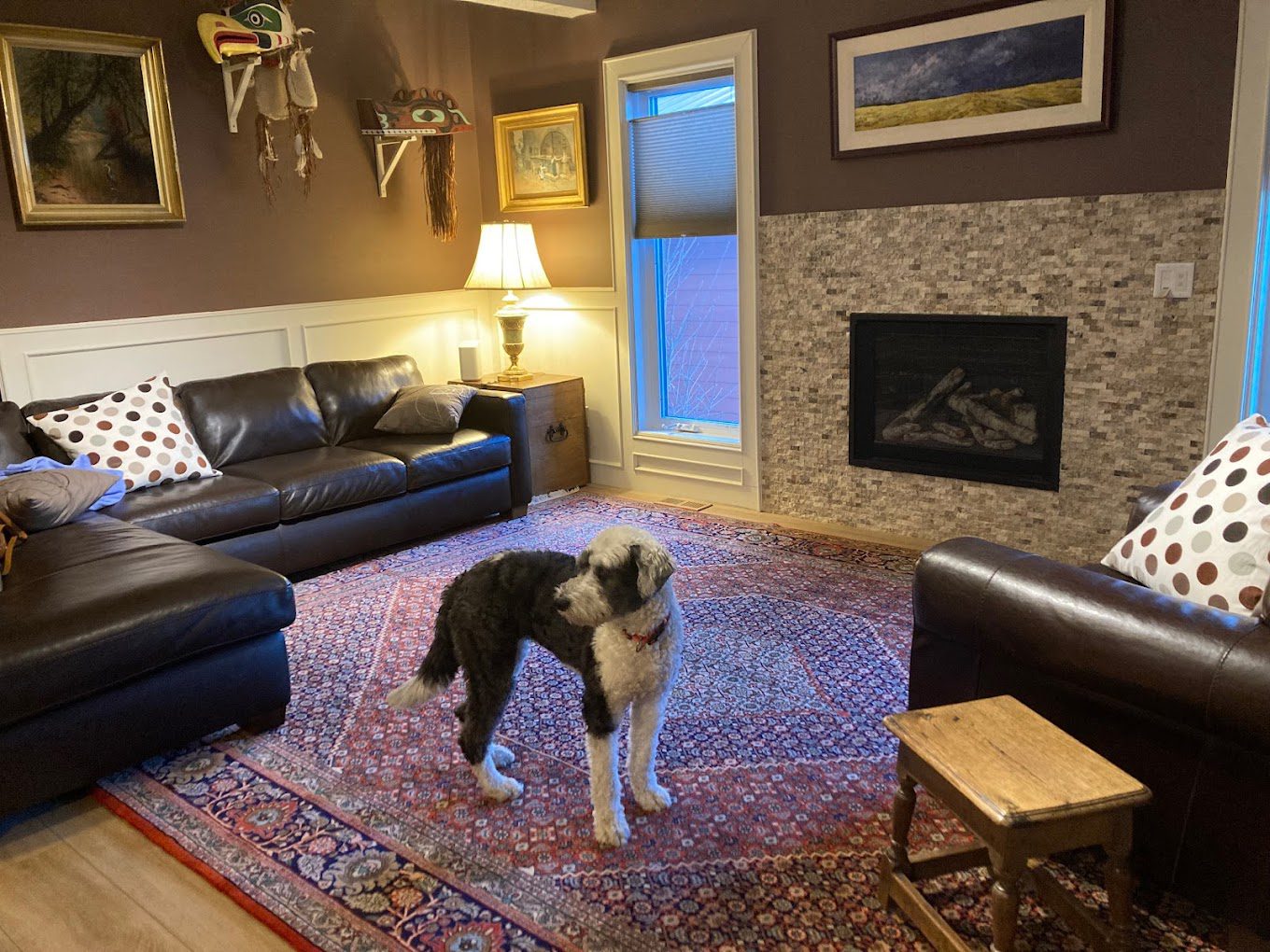Choosing a Rug
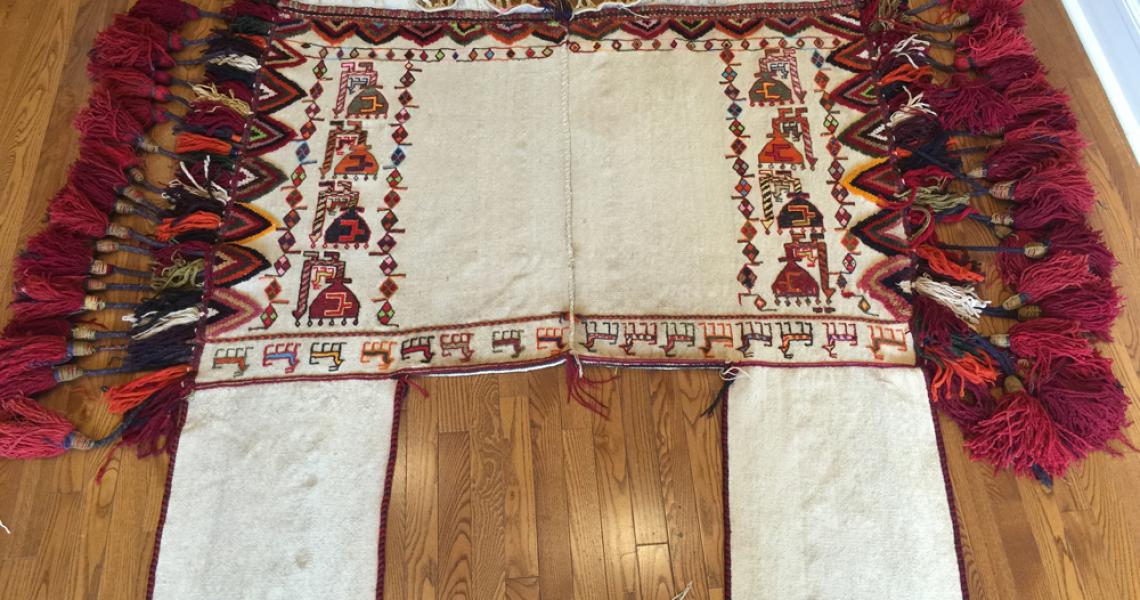
Mixing Pattern and Colour
Once you’ve lived with a beautiful, patterned rug, you won’t want to go back – we promise! For one, pattern is very forgiving. In addition, the richness and warmth of a great rug (even in a modern or transitional space) really grounds a room. What follows are some tips for using pattern, texture, colour and scale to really pull your space together.
Read More
We know this is not always possible. However, when you can begin designing a room from the ground up it is much easier. Persian rugs are one-of-a-kind pieces that will last your lifetime. Ideally, you want to select a rug that really captures you, and then choose your sofa covering, pillows, draperies, and paint etc. to complement the carpet.
Keep Patterns Focused
Few of us have the design skill to work a multitude of patterns into a space without it feeling dizzying. A good rule is to limit yourself to 3-5 patterns including the rug, and to use the patterns in a descending order of importance.
Pattern 1: the most dominant pattern, generally because it is the most colourful, large-scale, or prevalent. This could be the carpet.
Pattern 2: pick out 2 or more colours from pattern one. Change up the scale dramatically (ideally, either double or half of pattern 1). Change up the geometry of pattern 1. If pattern 1 is floral, choose something linear like a stripe or plaid. If pattern 1 is geometric, a more curvilinear pattern is a good foil.
Pattern 3: should have 2 or more colours from pattern 2 and be similar to either pattern1 or 2 in design, but different in scale. So if pattern 1 is a large-scale floral, and pattern 2 is a plaid, then pattern 3 could be a small-scale floral or a large-scale stripe.
Pattern 4 (optional): play with texture. Perhaps choose a tone-on-tone silk or subtlety patterned velvet. If your design is more casual, coarsely textured fabrics are a good option.
Pattern 5 (optional): this can be something fun in small doses, such as an animal print or a very strong reference to pattern 1 (same scale, colours and geometry) without exactly matching it.
Most fabric manufacturers create coordinated collections. This helps narrow your focus to patterns that work well together and with your beautiful rug. And don’t forget the solids: fabulous patterns shine brighter in a room where the eye has a place to rest, such as on a neutral wall or a solid coloured sofa.

Selecting the Right Size
Dining room rugs are generally the easiest size to figure out because dining tables come in fairly standard sizes and you really have two options for the rug: chair legs on or chair legs off.
Read More
When you sit down at the table, do you want the dining chair legs to remain on the carpet or to come off the rug and onto the floor? For a standard rectangular dining table width of 40”, if you want the chair legs to stay on the rug, you need a carpet at least 7’ wide. Closer to 8’ is even better. If your room is large, a rug as wide as 9’ or 10’ may look best. For most dining rooms you need a 7’x10’ – 9’x12’ rug.
If your dining table differs from the standard, you can determine the minimum size you need by taking your table measurements and adding 44” (48” is even better) to the width and length.
Now if you want the chair legs off the rug, you need to be careful that the rug is narrow enough that diners can pull their chairs out to be seated and then pull themselves up to the table without “tripping” over the edge of the rug. Typically this means a rug that is 5’ to 6’ wide for a rectangular table.
Living Room
First ask yourself if you want the rug to anchor the space or serve as an accent. An accent rug may be a 4’x6’ or 5’x8’ placed in front of the sofa.
Read More
If you plan to use more than one rug in a room, you may want to allow one rug to be the “boss” carpet. The boss carpet is not only the larger piece, but will also be more dominant in pattern and colours. An example would be to use an 8’x12’ with a central medallion in the main seating area and a 5’x8’ with an all over design in front of a pair of chairs.
Many people choose to place very large rugs in bedrooms with the bed placed atop the carpet. Doing so means that a queen size bed requires at least an 8’x10’ rug and that a king size bed needs a 9’x12’ or 10’x13’.
Read More
If choosing three pieces, it is best to select a boss rug, in this case the piece at the foot of the bed. Make this the boldest, most dramatic selection and choose “supporting players” for either side of the bed.
Selecting Rugs for Kids or Pets
We often hear customers express concerns about putting a fine carpet in a home that includes kids or pets. Rest assured that a properly selected carpet is VERY easy to maintain and can put up with a lot! In fact, a good rug cleans so easily and wears so well it’s about the best flooring choice out there.
For really high traffic areas, it’s generally best to select a village carpet in darker colours. This is the most practical choice for a variety of reasons. First, the denser pile on most village rugs (as compared to typical tribal pieces) means less stuff penetrates the surface. A regular vacuum and perhaps a damp rag to pick up any other “bits” and the rug looks like new. Second, while any colour can be cleaned (Sarah once spilled an entire 16oz raspberry smoothie on an ivory Kirman and it cleaned up with no trouble), darker hues are more forgiving if the rug is likely to get snacks or mud squished into it.
Read More
We always ask about how a room is used, and by whom, before showing customers carpets. This allows us to point out rugs we know will hold up well under those conditions and caution customers against any that might not.

